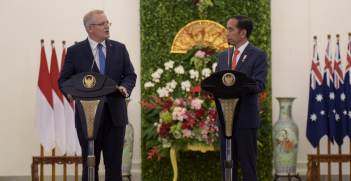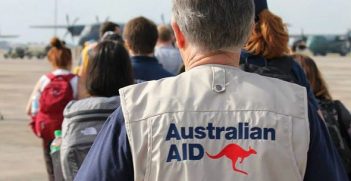Women in Australia’s International Affairs
Decades after formal barriers were removed, women remain demonstrably underrepresented in senior positions in Australia’s international affairs. A number of barriers remain which women and men should work together to overcome.
While women have been entering the Department of Foreign Affairs and Trade in equal numbers since 1985, they remain underrepresented in senior positions. In June 2012, less than a third of Australia’s ambassadors and high commissioners posted abroad were women and women accounted for only 26 percent of the DFAT’s Senior Executive Service. Similar results can be seen in think tanks, academia, non-profits and other sectors.
In a recent article “Is international affairs too ‘hard’ for women? Explaining the missing women in Australia’s international affairs” I and my co-authors Emily Blizzard and Bridget Crane look at some of the explanations for this. There is no evidence that women are less motivated or lack interest in international affairs. The problem instead is that the career pipeline is ‘leaky’: women tend to disappear before they reach senior levels.
Explaining the Missing Women
A range of work culture and practical considerations currently make it hard for many women to achieve senior positions. There are four factors which help explain the scarcity of senior women in Australia’s international affairs: the legacy of direct discrimination, continuing indirect discrimination, lack of support for family responsibilities and socially-constructed gender norms. These will have greater or lesser impact in different sectors within the field.
While it will continue to diminish over time, the legacy of now-abolished direct discrimination is still a factor. Until 1966 women were prohibited from continuing to work in the Australian public service once married. As a consequence, women who today would have acquired the necessary seniority, experience and qualifications to occupy senior positions were lost to the field. This also affected women who entered the workforce in subsequent years and found themselves in male-dominated environments with very few female role models.
Indirect discrimination also remains a factor, such as when formal or informal networks of senior managers who share group characteristics create an exclusionary culture. Male-dominated networks can mean that women struggle to gain promotions commensurate with their talents, qualifications, experience and seniority.
Another factor is women’s often disproportionate share of family responsibilities and the lack of support to combine these with work. The absence of a culture of equal parental leave, affordable childcare and flexible working hours for senior positions disadvantages women in the workplace. Given that the majority of women would choose to balance family and work if possible, their absence from senior levels of international affairs suggests that there are institutional barriers that prevent them from doing so. Women face challenges when returning from maternity leave such as difficulties re-establishing their former professional networks and negative attitudes towards working mothers.
Finally, women are affected by socially-constructed gender norms which create exclusionary expectations and stereotypes that can be so deeply embedded as to be unconscious. In international relations discourse, masculinity is conventionally associated with power, autonomy, rationality and the public space while femininity is associated with weakness, dependence, emotionality, the private sphere and a nurturing role. These constructions can create expectations about the work a woman should do and how she should behave which may limit her career progression. Alison Broinowski refers to this as a “glass curtain” with more women in ‘human rights, development, peace and culture’ on one side and more men in ‘wars and intelligence on the other’.
Strategies for Overcoming Barriers
The good news is that there are a number of women who have progressed to senior positions and made strong contributions to Australia’s international affairs. These women have been pioneers in their field, often being the first woman or sometimes the first Australian to have occupied such a position.
The article presents the careers of three women – Professor Emeritus Helen Hughes AO FAIIA, Her Excellency Ms Penny Wensley AO and Professor Hilary Charlesworth FAIIA – as illuminating examples not only to show the barriers these women encountered, but also the strategies that they implemented in their journey to the top positions in their field. These include actively looking for progressive working and learning environments, finding strong mentors, speaking out against impediments to gender equality (such as the lack of childcare), taking advantage of opportunities for professional development and maintaining a keen interest in the field of international affairs. Women can make the most of their opportunities for advancement by utilising a range of these strategies.
However institutional change is also necessary to remove remaining obstacles. Employers should ask whether their hiring, workplace and promotion policies are truly gender-neutral or whether they provide a hidden advantage to male employees or disadvantage to female employees. Men can take responsibility to help change cultures which encourage or condone barriers that impede women’s professional advancement.
It is a joint task for women and men involved in Australia’s international affairs to remove obstacles to gender balance so that both are able to contribute their fullest to the field.
Melissa Conley Tyler is the National Executive Director of the Australian Institute of International Affairs.
This is an abbreviated version of an article “Is international affairs too ‘hard’ for women? Explaining the missing women in Australia’s international affairs” published in the Australian Journal of International Affairs with co-authors Emily Blizzard and Bridget Crane.





